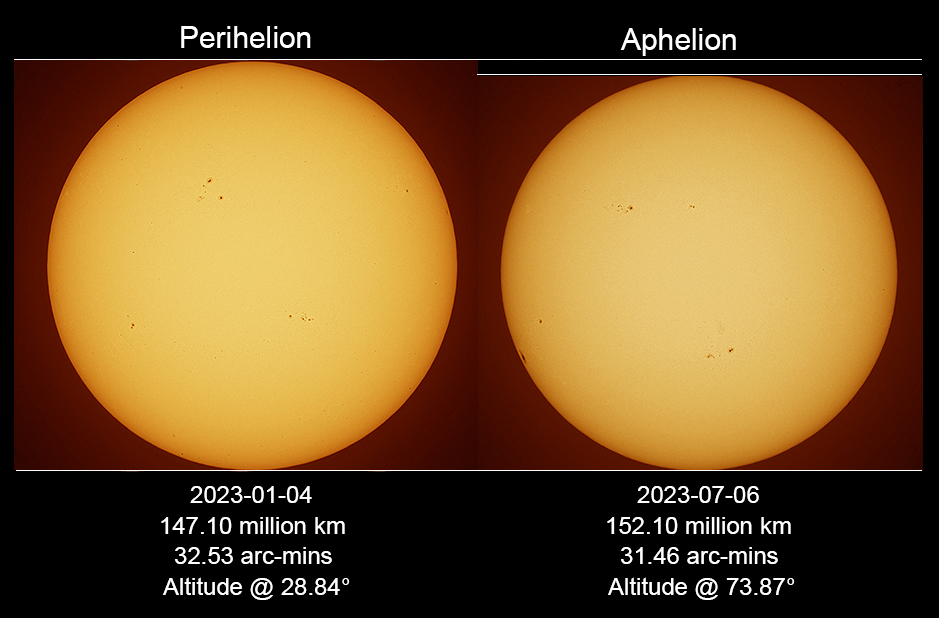
A common misconception is that the Sun is larger when it is near the horizon than when it is high overhead. However, this optical illusion is
not true, for the apparent size of the Sun is virtually the same when it is rising or setting near the horizon or when viewed overhead (in
fact, it is very slightly smaller when viewed near the horizon due to refraction as well as the greater added distance in observing across
the Earth's radius). This illusion has been wrongly attributed to landmarks near the horizon, such as homes and trees, supposedly giving a
sense of perspective and whereas the same perspective is lost when looking at the overhead Sun bathed in an empty sky. As noted by
Donald E. Simanek and
Carl J. Wenning, the real reason behind this trick by our brain is
the perception of the Sun (or Moon) being against a "close" or "distant" foreground and which is lucidly described by the above two references.
However, if we were approach the apparent size of the Sun methodically by studying it during perihelion and aphelion, we can detect a small
change using photographic equipment thanks to the elliptical orbit of our planet around the Sun which leads to variations in distance (and
apparent size) of the order of about 3.4%. More specifically, at perihelion each January, Earth is approximately 147.10 million km away from the
Sun and whose apparent diameter is about 32.53' whereas, at aphelion each July, Earth is approximately 152.10 million km away and the Sun is
characterized with an apparent diameter of about 31.46'. This difference of 5 million km between perihelion and aphelion leads to the slight
change in the apparent diameter of the Sun as illustrated by the two images of the Sun below captured six months apart when the Sun was near
its minimum possible perihelion (Jan 4/2023) and maximum possible aphelion (Jul 6/2023) and while crossing the local southern meridian.
Note: The change in the apparent diameter of the Moon is MUCH more dramatic between perigee and apogee and is
fully documented elsewhere on this website (see here).
|
Body: Sun Mass: 332,900 x Earth Mean Eq Diameter: 109.1 x Earth R.A / Dec: 18h 21m 42s / -23° 20' 57" Distance:
Diameter:
Magnitude: -26.8 |
 |
Date:
Location: Athens, Greece Equipment: AP 160 f/7.5 StarFire EDF AP1200GTO/CP3 GEM AP 2x Conv Barlow Canon EOS 6D Mark I Baader UV-IR/Cut Baader ND-5 (full-aperture) Exposures: 2 x 1/250 sec ISO 100 RAW Image Format 5472x3648 Image Size Manual Mode Software: Photoshop CS6 Processing: Grayscale Unsharp Masking Brightness/Contrast Levels Resampling JPG Compression |